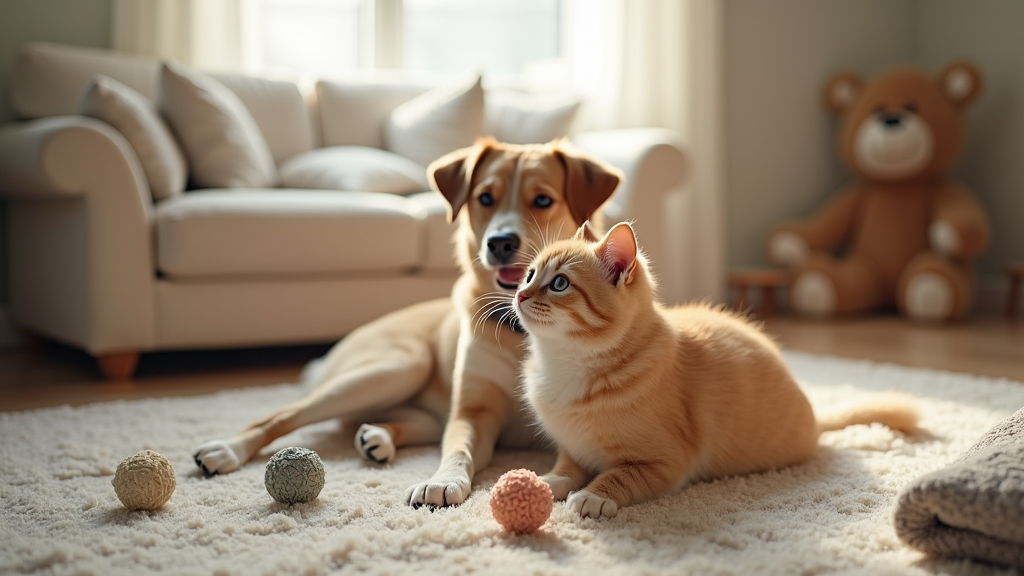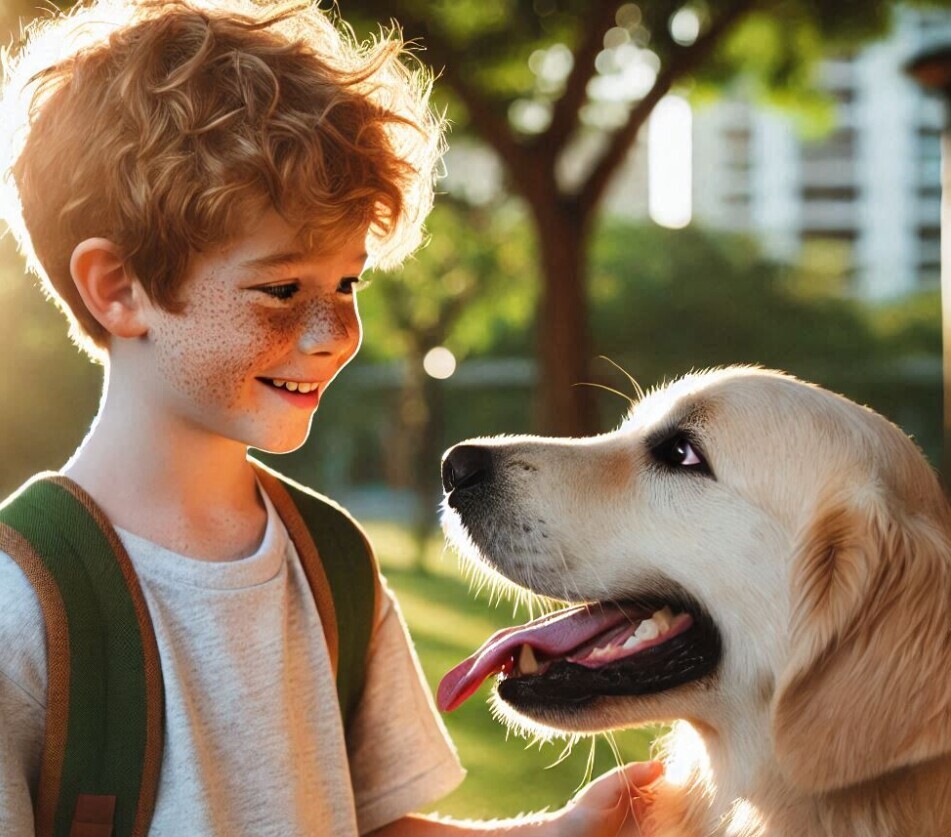
Understanding Pet Behavior: Simple Answers for Children and Families
Curious about why your family pet acts a certain way? I know how many questions come up when you have pets and kids together at home. This guide covers the basics of pet behavior and offers practical advice for families with children, so everyone can enjoy life with a happy, well-behaved animal friend. If you have a specific question not covered below, ask your local vet or animal trainer for more help.
Common Pet Behaviors and What They Mean
Why does my dog bark or my cat meow so much?
Pets use sounds to communicate. When my dog barks, it might mean he is excited, bored, wants attention, or senses something unusual. Cats meow to say hello, ask for food, or let me know if something is wrong. Noticing when and why pets make noise helps me understand their needs better. Sometimes, certain breeds of both cats and dogs are more vocal than others. If you notice a sudden change in how much your pet makes noise, it’s always smart to check in with your vet just to be sure everything is okay.
What does it mean when a pet hides or acts scared?
When my cat hides under the bed or my dog crouches low, it usually means they feel anxious, startled, or need a quiet break. Loud noises, new people, or sudden changes can stress them out. Giving pets a safe, cozy spot helps them relax. Sometimes, bringing out a favorite toy or blanket makes a big difference if they seem nervous. Always let your pet take a break without forcing interaction, which helps them gain confidence at their own pace.
Is it normal for pets to chew or scratch things?
Yes, this is normal for many animals. Puppies chew when teething or bored, and cats scratch to stretch and keep their claws healthy. I provide toys, scratching posts, and safe chew items to protect my stuff and keep pets content. You can also switch up toys regularly to keep things interesting for your pet, which helps prevent them from getting bored and turning to your furniture or shoes for entertainment.
How can I tell if my pet wants to play?
Pets show they want to play by wagging their tails, jumping, or bringing toys to me. My cat might pounce around or chase a feather toy. Noticing these signs helps me connect with my pet in positive ways. Playing together helps pets use up energy and lets them show off their personality. Recognizing your pet’s style when it comes to play builds a stronger bond.
Creating a Pet-Friendlykindly Family Home
How do I keep kids and pets safe together?
Clear rules really help. I teach kids to move calmly near pets, avoid hugging too tightly, and never bother animals while they eat or sleep. Supervision is super important, especially with younger kids. If my pet looks uncomfortable or wants space, I always give them a break. Reminding children about gentle touch and respectful distance is great for preventing accidental scratches or bites; it also helps kids build good habits around animals.
What are some good ways for kids to help care for pets?
Kids love helping out. Simple tasks like filling water bowls, brushing fur, or playing gentle games build trust between children and pets. I show my kids how to wash their hands after playing and remind them to treat animals kindly. For older children, helping with feeding or joining in training sessions makes them feel responsible and included, which is excellent for family teamwork.
Should pets have their own spot in the house?
Absolutely. I set up a comfy bed, crate, or quiet corner where my pet can rest undisturbed. This helps them feel safe, especially if they need a break from the lively energy of a busy household. Adding a favorite blanket, toy, or even a piece of your clothing can help your pet settle more easily.
Training and Behavior Tips For Families
How can I teach my pet to follow rules?
Consistency and patience work wonders. I reward good behavior with treats and praise, so my pet learns what makes me happy. If a pet makes a mistake, I redirect them gently and try again later. Keeping training sessions short and positive gets the best results. Sometimes, using a clicker or other small reward system can help make learning new tricks or rules super fun for pets and kids alike.
What if my pet acts out?
Sometimes pets misbehave because they’re bored, confused, or stressed. I consider if my pet is getting enough exercise and mental challenges. If problems continue, I ask a qualified animal trainer or vet for suggestions. Quick punishments rarely help and can make things worse, so patience is key. Try changing your pet’s routine, or add new toys and games to help work out excess energy. This can ease up problem behaviors and make homes more peaceful.
Should my child be involved in training?
Involving kids in simple training builds trust and respect. I guide my children to give treats or cues. This helps pets learn to listen to all family members, not just adults. It’s a fun way for kids to gain confidence and helps reinforce positive behaviors in pets, making everyone feel more connected.
Pet Health, Happiness, and Family Routines
How can I keep my pet healthy and happy?
Daily exercise, good food, regular check-ups, and lots of affection keep pets in top shape. I create playful routines that include the whole family, like morning walks or evening play sessions, so my pet feels loved and included. Try adding small tasks to routines, like brushing your pet together or learning a new trick each week—it brings everyone closer and keeps pets mentally sharp. Remember that pets, like people, need both physical and mental stimulation to really thrive.
What should I do if my pet gets sick or acts differently?
If my pet seems tired for no reason, stops eating, or acts unlike themselves, I call my vet for advice. Early action helps prevent bigger problems. Kids can help by noticing changes and letting me know, which teaches responsibility. It’s also wise to keep a simple pet journal, where the family can jot down any small changes or new skills—this way, everyone joins in caring for your furry friend.
Can pets help children learn important skills?
Living with pets teaches my kids about empathy, responsibility, and respect. Watching their pet’s moods and needs gives them real-world practice in caring for others. These lessons last a lifetime and help build stronger family bonds. Letting children help solve small problems, like what toy to offer or how to calm down a nervous pet, gives them a confidence boost too.
WatchThis Video:
Have More Questions? Resources For Curious Families
If you still have pet behavior questions, your veterinarian or a local trainer can offer even more tips. Lots of libraries and trusted websites like ASPCA Pet Care and AVMA Pet Owner Resources share helpful guides. I encourage you to explore these with your children so you all feel confident and prepared. Remember, learning about pets together can be a fun adventure for the whole family, and being prepared helps everyone—including your furry friends—feel at home.


This article is a wonderful resource for families navigating the joys and challenges of raising children alongside pets.
The practical advice on interpreting pet behaviors and fostering safe interactions is both enlightening and reassuring. I especially appreciated the emphasis on teaching children to respect pets’ boundaries, such as not disturbing them during meals or rest.
The guidance on creating a pet-friendly home environment is particularly valuable. Establishing clear rules and providing safe spaces for pets can significantly enhance the harmony between children and their furry companions.
A couple of questions came to mind:
1. What strategies do you recommend for helping children understand and respect a pet’s body language, especially when the pet is feeling anxious or overstimulated?
2. Are there specific activities or games that can strengthen the bond between children and pets while also teaching responsibility and empathy?
Thank you for sharing these insights—it’s heartening to see resources that support families in nurturing compassionate and respectful relationships with their pets.
Thank you so much for your thoughtful feedback—I’m really glad you found the article helpful! I’d be happy to answer your excellent questions:
**1. Helping Children Understand Pet Body Language:**
One of the best strategies is to use visual aids—like illustrated charts or simple posters showing common pet signals (e.g., a wagging tail vs. a tucked one, flattened ears, yawning, or hiding). Role-playing games also work well; you can mimic different pet moods and have your child guess what they mean. Always encourage kids to “ask the pet’s permission” by holding out a hand and watching the animal’s reaction before engaging. Over time, children become more attuned to subtle cues and learn when to give the pet space.
**2. Activities That Teach Bonding and Responsibility:**
Simple daily routines like feeding or brushing pets can build empathy and a sense of care. Interactive games like hide-and-seek with treats or gentle fetch (with supervision) are fun and build trust. Creating a “pet journal” is another great activity—children can draw pictures, note feeding times, or write about what they learned that day about their pet. These types of activities make caring for pets both fun and meaningful.
Thanks again for engaging with the article—your questions highlight exactly the kind of mindful pet-parenting that helps animals and children thrive together!
Kindregards Tim